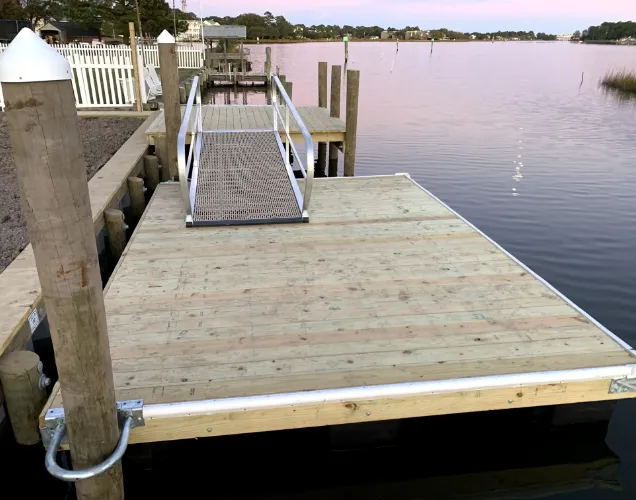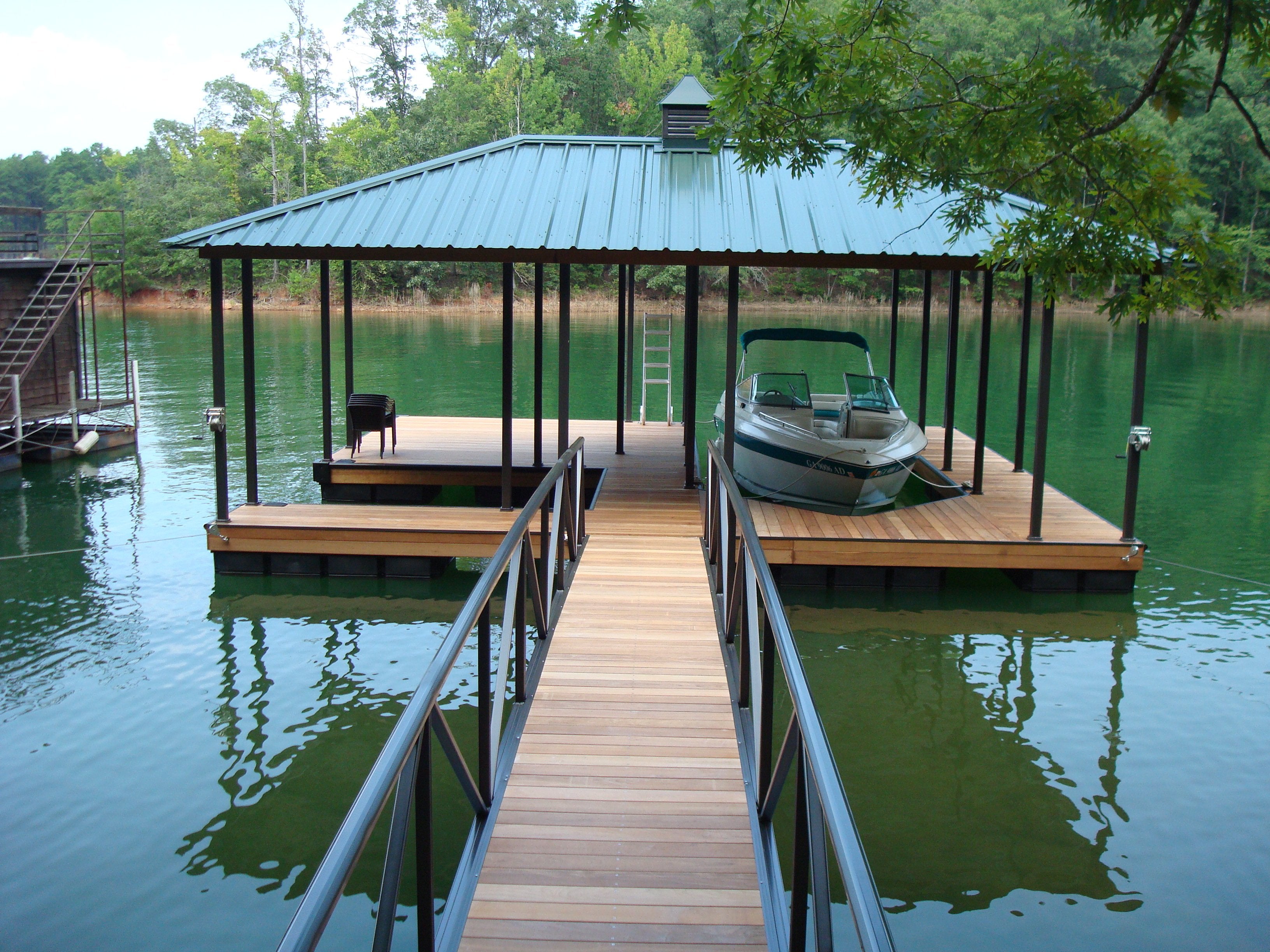Floating Docks: The Smart Option for Modern Waterside Living and Recreation
Floating Docks: The Smart Option for Modern Waterside Living and Recreation
Blog Article
Develop the Perfect Docking Solution With Floating Docks
Floating docks existing a versatile remedy for a selection of maritime needs, adjusting seamlessly to fluctuating water degrees and diverse vessel types. As we explore the essential components that add to the efficiency of floating docks, a number of essential elements pertaining to stability and maintenance will certainly emerge, raising inquiries concerning exactly how to enhance your docking experience.

Advantages of Floating Docks
Floating docks offer many advantages that make them an ideal choice for numerous maritime applications. Unlike dealt with docks, floating docks increase and autumn with the trend, making sure consistent access for vessels.
In addition, floating docks are usually simpler and quicker to install compared to typical set structures. Their modular layout enables for straightforward setting up and disassembly, helping with upkeep and moving when required. This flexibility is particularly helpful for short-lived applications or in atmospheres where problems may transform.
Floating docks additionally often tend to be a lot more eco-friendly, as they minimize disruption to the seabed and bordering aquatic environments. Their buoyant nature minimizes the threat of damages to marine life, promoting a healthier setting. In addition, these docks can be personalized to accommodate different vessel sizes, ensuring that they meet particular operational needs - floating dock builder.
Eventually, the mix of flexibility, ease of installment, and ecological factors to consider makes floating docks an extremely efficient option for a vast array of maritime requirements.
Selecting the Right Materials
Choosing the suitable materials for floating docks is essential to make sure durability, durability, and security. The selection of materials directly impacts the dock's performance in numerous ecological conditions, consisting of exposure to water, sunshine, and possible wear from aquatic website traffic.
Typical products used for floating docks include light weight aluminum, wood, and high-density polyethylene (HDPE) Light weight aluminum is lightweight, corrosion-resistant, and calls for marginal maintenance, making it an outstanding choice for longevity. Its initial expense can be greater contrasted to other materials.
Timber, while cosmetically attractive and supplying a conventional appearance, can be at risk to rot and bug damages if not correctly treated. Using pressure-treated timber or naturally long lasting species like cedar or redwood can alleviate these concerns.
HDPE is a popular choice because of its resistance to UV rays and chemicals, in addition to being ecologically pleasant. floating docks. It is readily available and lightweight in numerous shades, enabling customization
Eventually, the best material selection will depend upon specific requirements, including budget, desired looks, and environmental factors to consider. Cautious examination of these aspects will result in a resistant and successful floating dock option.
Style Considerations for Security
When creating floating docks, making sure stability is a basic element that can dramatically impact their capability and safety. Stability in floating dock style is affected by different aspects, consisting of buoyancy, weight circulation, and the setup of parts.
Weight circulation is important; evenly dispersing loads throughout the dock avoids turning and improves stability. Larger designs can offer raised security, especially in rough water problems, while longer docks might call for extra assistances to prevent sagging.
An additional crucial navigate to this site consideration is the environmental influence, consisting of wave action and wind. Including attributes such as sidewalls or skirting can assist alleviate the results of ecological forces, maintaining security in unfavorable conditions. Eventually, a mix of thoughtful layout, product option, and understanding of ecological elements will yield a drifting dock that meets both stability and security demands.
Installment Tips and Strategies

Following, protect the needed authorizations and abide by neighborhood guidelines, which might dictate setup methods and environmental considerations. If needed, engage a certified service provider experienced in floating dock setups. Use premium products developed for marine settings to boost toughness and durability.
When positioning the dock, straighten it parallel to the shoreline to facilitate simple gain access to. Make certain that the anchoring system is durable, using concrete blocks or helical anchors to stabilize the dock against wind and wave activity. It's crucial to account for seasonal water level fluctuations, consisting of prospective ice movement in cooler climates.
Throughout the setup, confirm the dock's floatation and security before finalizing the anchoring. Routinely evaluate the setup for any kind of signs of wear or damages. By following these view strategies and ideas, you can achieve a safe, functional, and cosmetically pleasing floating dock setup that fulfills your requirements.
Maintenance and Treatment Standards
Caring and preserving for floating docks is essential to extending their life-span and ensuring risk-free use. Normal inspections ought to be performed to identify any type of indications of wear, damages, or aquatic development. Look for cracks, loose fittings, or stained areas on the dock's surface area, as these problems can jeopardize structural honesty.
Cleaning up is essential. Make use of a pressure washing machine to get rid of algae, barnacles, and particles, which can gather with time. For persistent growth, consider ecologically pleasant cleaner that will not hurt water life.
Furthermore, inspect the mooring lines and anchors often to ensure they are protected and totally free from rust. Change any type of torn or damaged lines quickly to preserve stability.
Throughout severe weather condition, such as storms or freezing conditions, take preventive actions. Safeguard the dock with extra mooring lines and, if possible, remove any kind of removable elements to avoid damage.
Verdict
In final thought, the execution of floating docks presents a effective and functional docking service ideal for various maritime applications. With appropriate installment and regular maintenance, floating docks can offer reliable this and reliable docking experiences for a large array of vessels.
As we explore the necessary elements that contribute to the efficiency of floating docks, several crucial factors relating to stability and upkeep will arise, increasing inquiries about exactly how to maximize your docking experience. Unlike fixed docks, floating docks rise and loss with the tide, making certain consistent ease of access for vessels.When creating floating docks, making sure security is a fundamental element that can significantly affect their functionality and security. Security in floating dock layout is influenced by various factors, consisting of buoyancy, weight circulation, and the arrangement of components. Eventually, a combination of thoughtful style, material choice, and understanding of environmental elements will yield a floating dock that fulfills both security and safety and security needs.
Report this page